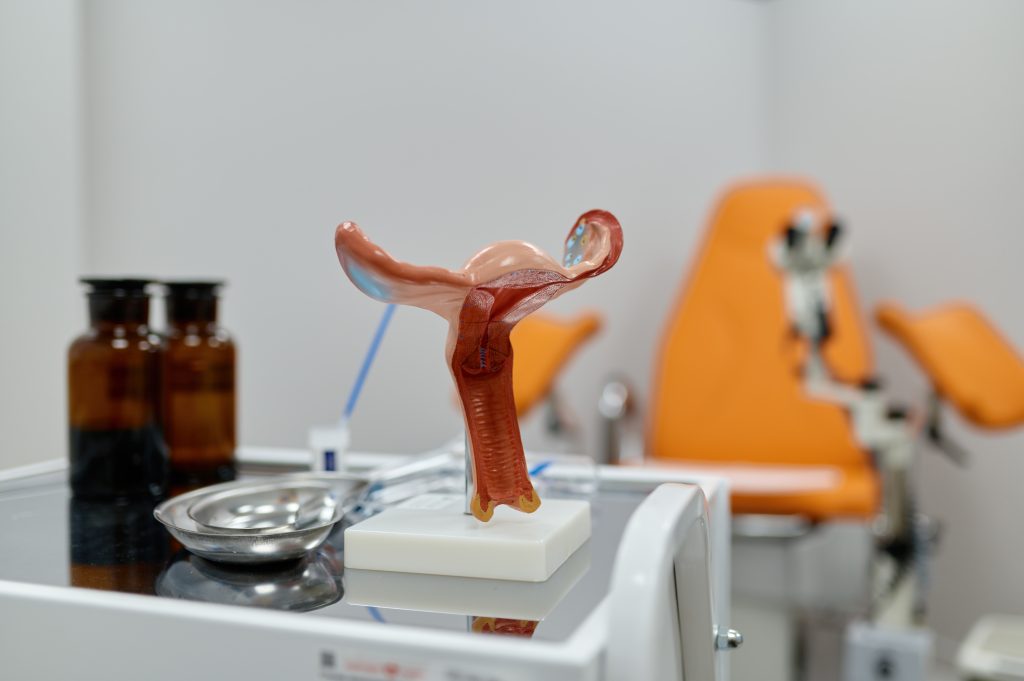Myomectomy | Conditions , Types ,Treatments
A myomectomy is a medical procedure designed for the removal of uterine fibroids. There are various techniques utilized in this surgery. Regardless of the method chosen, the procedure ensures that your uterus remains intact, enabling you to conceive in the future.

Who is a good candidate?
Women who have fibroids and want to preserve the ability to have children in the future or desire to retain their uterus for other reasons may consider undergoing a myomectomy.
A myomectomy differs from a hysterectomy in that only the fibroids are removed, leaving the uterus intact. By preserving the uterus, it provides the opportunity to conceive children later on.
The choice of myomectomy suggested by your doctor will be determined by the dimensions and positioning of your fibroids.
- If you have a significant number or exceptionally large fibroids growing in the wall of your uterus, the most suitable option for you might be an abdominal myomectomy.
- Laparoscopic myomectomy can be a preferable option for individuals with a smaller number and size of fibroids.
- If you have fibroids inside your uterus that are smaller in size, hysteroscopic myomectomy may be the preferred option.
Reasons to Consider a Myomectomy
A considerable number of women who have uterine fibroids may not display any symptoms. In cases where symptoms do arise, certain medications, hormonal therapies, or alternative non-surgical treatments may offer relief.
In case the mentioned treatments are not effective in controlling severe symptoms, doctors may suggest a myomectomy. Women may opt for a myomectomy if they experience severe symptoms such as:
- Bleeding between periods
- Experiencing excessive and extended menstruation, occasionally accompanied by coagulated blood.
- Pain during intercourse
- Pelvic pain, especially during periods
- Pregnancy problems
- Subfertility or infertility
- Frequent urination
- Constipation
A myomectomy is a treatment choice for uterine fibroids that permits future pregnancies. Alternatively, a hysterectomy, a surgical procedure to eliminate the uterus, is also available for women who have no plans of conceiving in the future.

What’s the difference between a myomectomy and a hysterectomy?
The primary distinction between the two methods is that a myomectomy solely eliminates the fibroids while keeping the uterus intact. This means that your menstrual cycle will resume and you can still conceive in the future. On the other hand, a hysterectomy removes both the fibroids and your uterus. Therefore, individuals who undergo a hysterectomy are unable to conceive and will no longer experience menstrual periods.
Types of Myomectomy
There are multiple methods available for performing a myomectomy. Depending on factors such as the size, quantity, and position of your fibroids, you may qualify for either an abdominal myomectomy, laparoscopic myomectomy, or hysteroscopic myomectomy.
Abdominal Myomectomy (Traditional Open Surgery)
Traditional open surgery, also known as abdominal myomectomy, involves the removal of uterine fibroids through a large incision in the abdomen.
The surgeon will create a singular cut in the lower abdomen to take out fibroids. We usually opt for abdominal myomectomy for patients with numerous or very large fibroids. It takes around four to six weeks to recover from this procedure.
Hysteroscopic Myomectomy
A hysteroscopic myomectomy is a procedure used to remove submucous fibroids that are located inside the uterus. In this procedure, a special instrument called a hysteroscopic resectoscope is used to remove the fibroids. The resectoscope is inserted into the uterus through the vagina and cervical canal. The fibroid is surgically removed using a wire loop that is heated by electricity.
This particular form of myomectomy is only suitable for women who have submucosal fibroids.
This technique cannot be used to remove fibroids that are situated in the uterine wall. Hysteroscopic myomectomy is a surgical procedure that allows patients to go home on the same day after a few hours of monitoring in the recovery room. Most patients recover within just a few days, and there are no visible marks or scars on the skin from the procedure.
Pre-menopausal women may experience the recurrence of fibroids.
Laparoscopic myomectomy
Laparoscopic myomectomy is a surgical procedure where your fibroids are removed by your surgeon through multiple small cuts. This can also be done using robotic assistance. It is a less invasive method and allows for a quicker recovery compared to abdominal myomectomy.
On the day of your operation

After your surgery, it will be necessary for you to spend one night in the hospital. The duration of your stay will depend on the type of procedure you undergo and your personal healing process.
You will meet with a nurse, doctor, anaesthetist, and potentially a physiotherapist and pain nurse on the day of your surgery. They will provide you with details and instructions regarding your procedure.
The duration of your surgery will primarily rely on the method used and the number of fibroids being extracted. Occasionally, the procedure may last for several hours. Your physician will offer you additional details.
How does the recovery process occur following a myomectomy?
The length of your recovery will vary based on the specific procedure you undergo and any complications that may arise. You may experience some discomfort in the initial days following the surgery, but your healthcare provider will prescribe pain medication to alleviate this. They will also advise you to engage in leg movement or short walks after the surgery to avoid the formation of blood clots.
It may take up to six weeks to fully recover and return to your usual activities after undergoing an open myomectomy.
You can be discharged on the same day following a laparoscopic myomectomy. The recovery period at home typically lasts for approximately two to four weeks.
If the procedure is conducted hysteroscopically, without any incisions but through the vagina, the patient can expect to fully recover within a few days.
Treatment in Türkiye:
The medical staff of surgical teams, doctors, and consultants at REHABTÜRK can provide the best treatment options and free consultations, striving to stay up-to-date on the latest medical technologies and methods.

